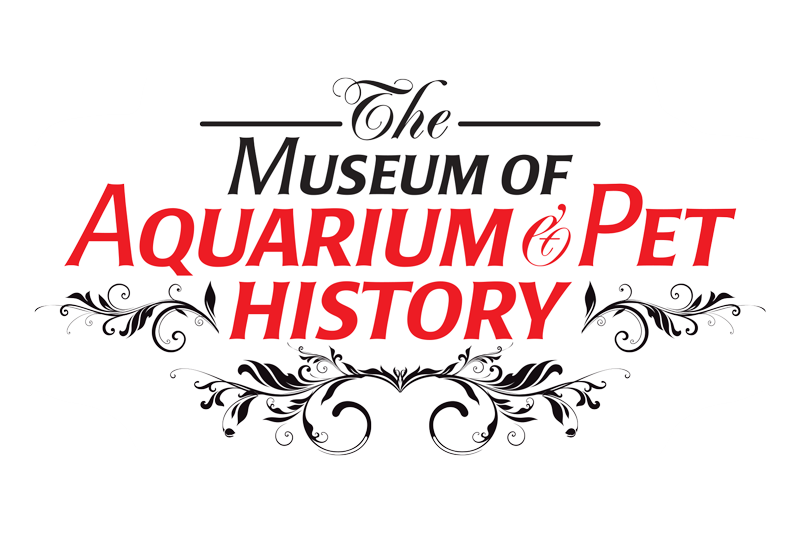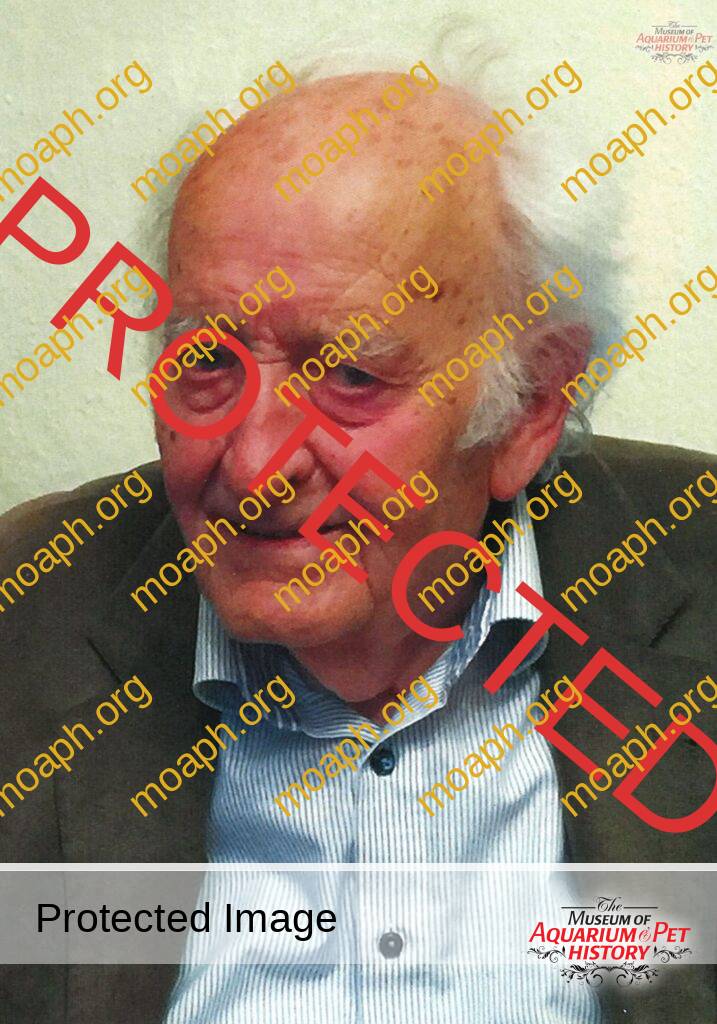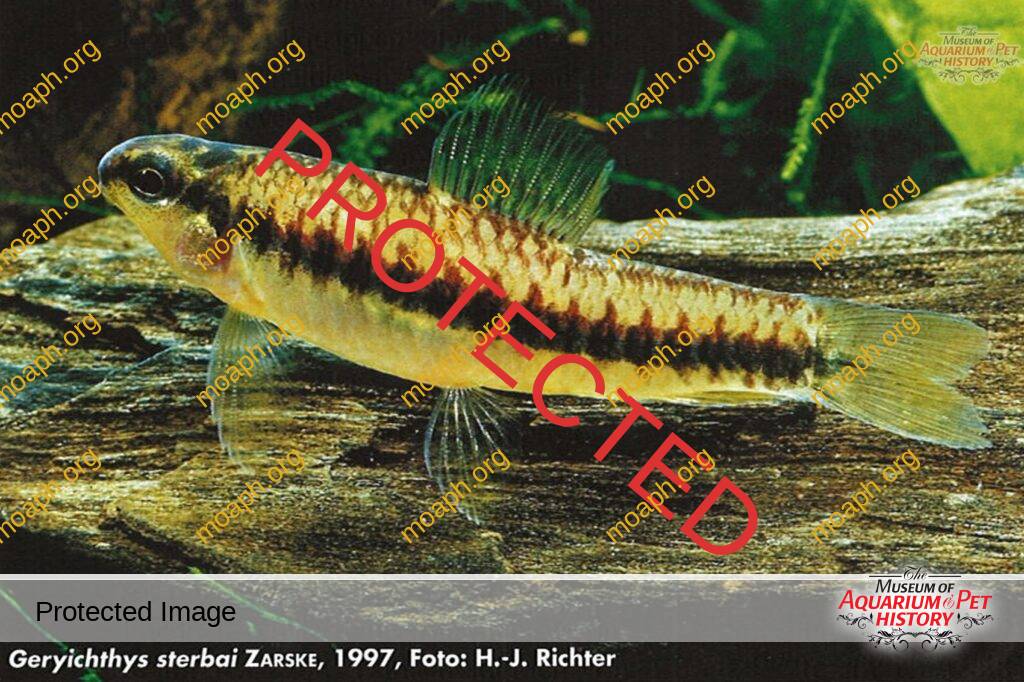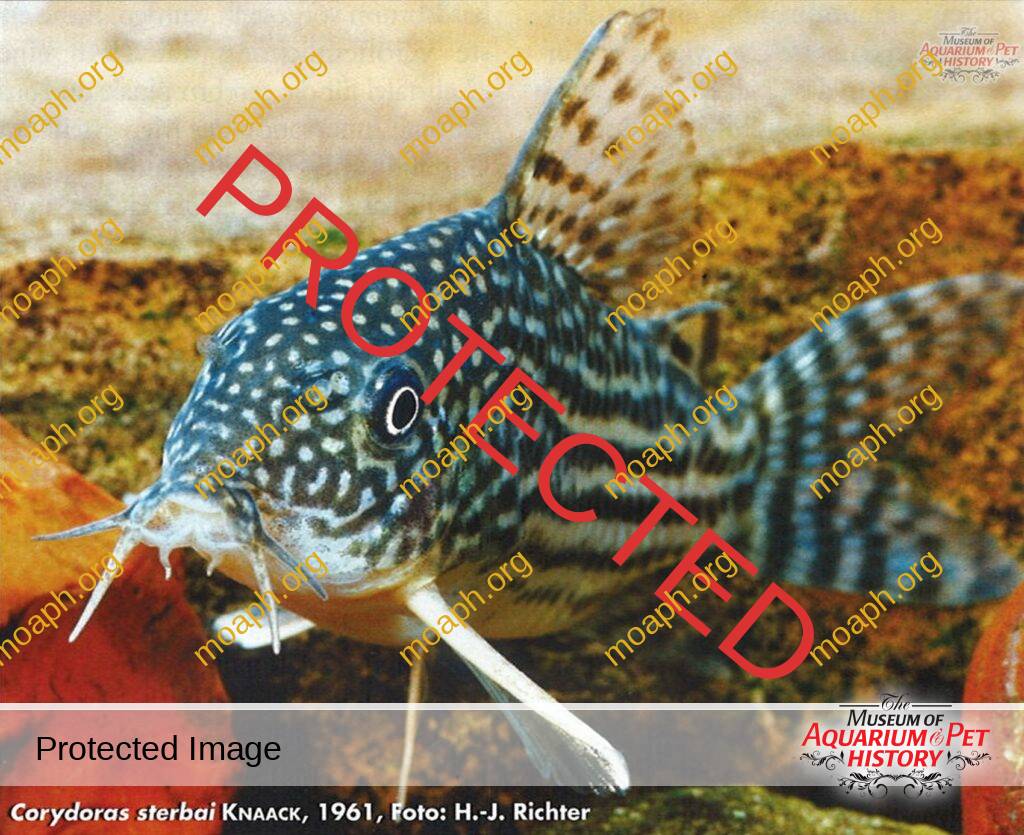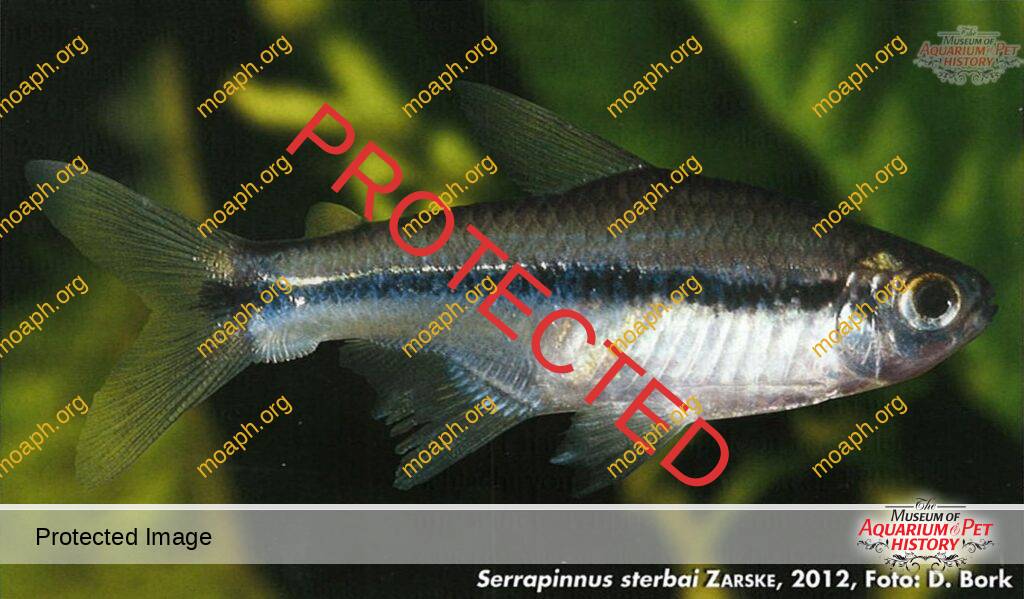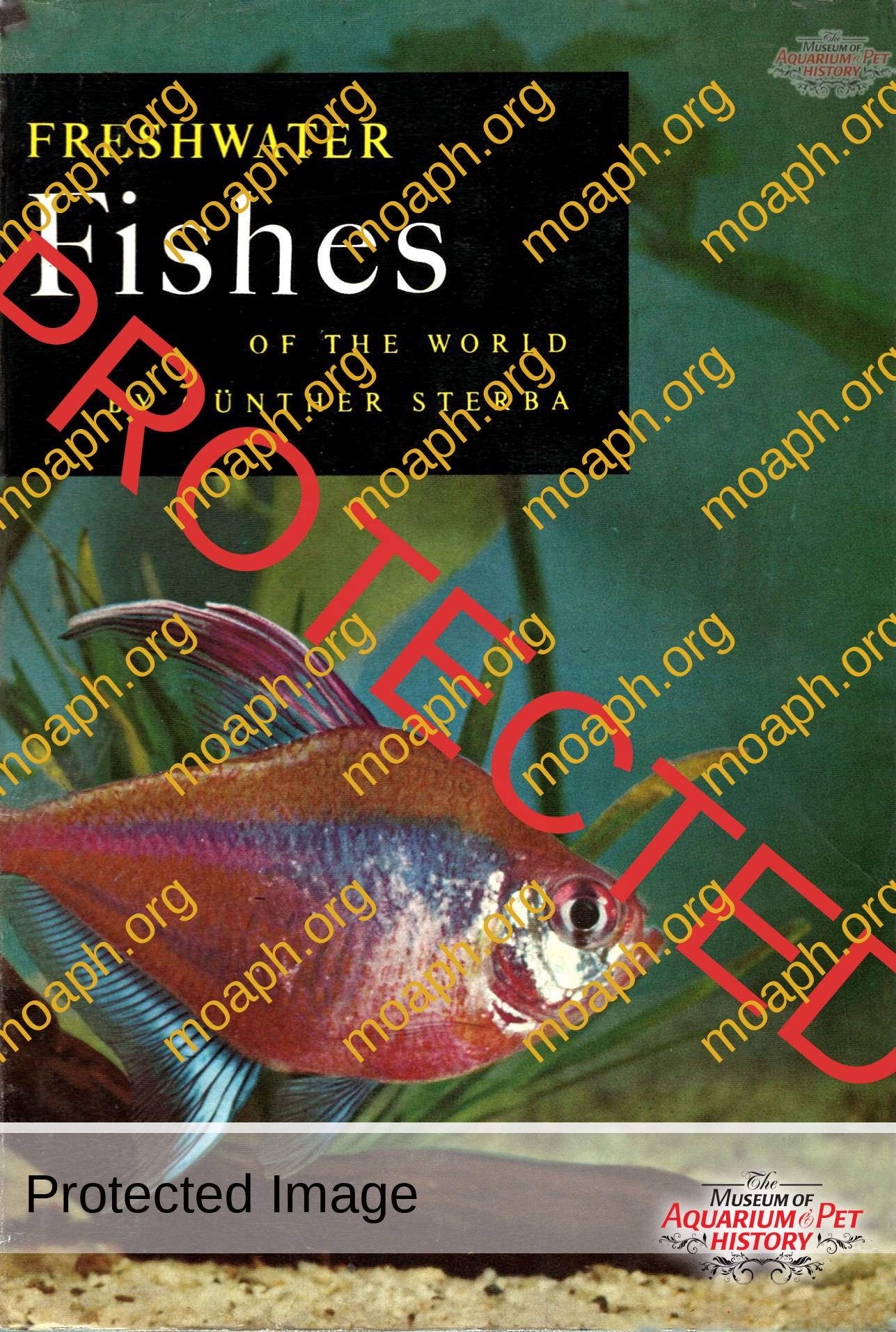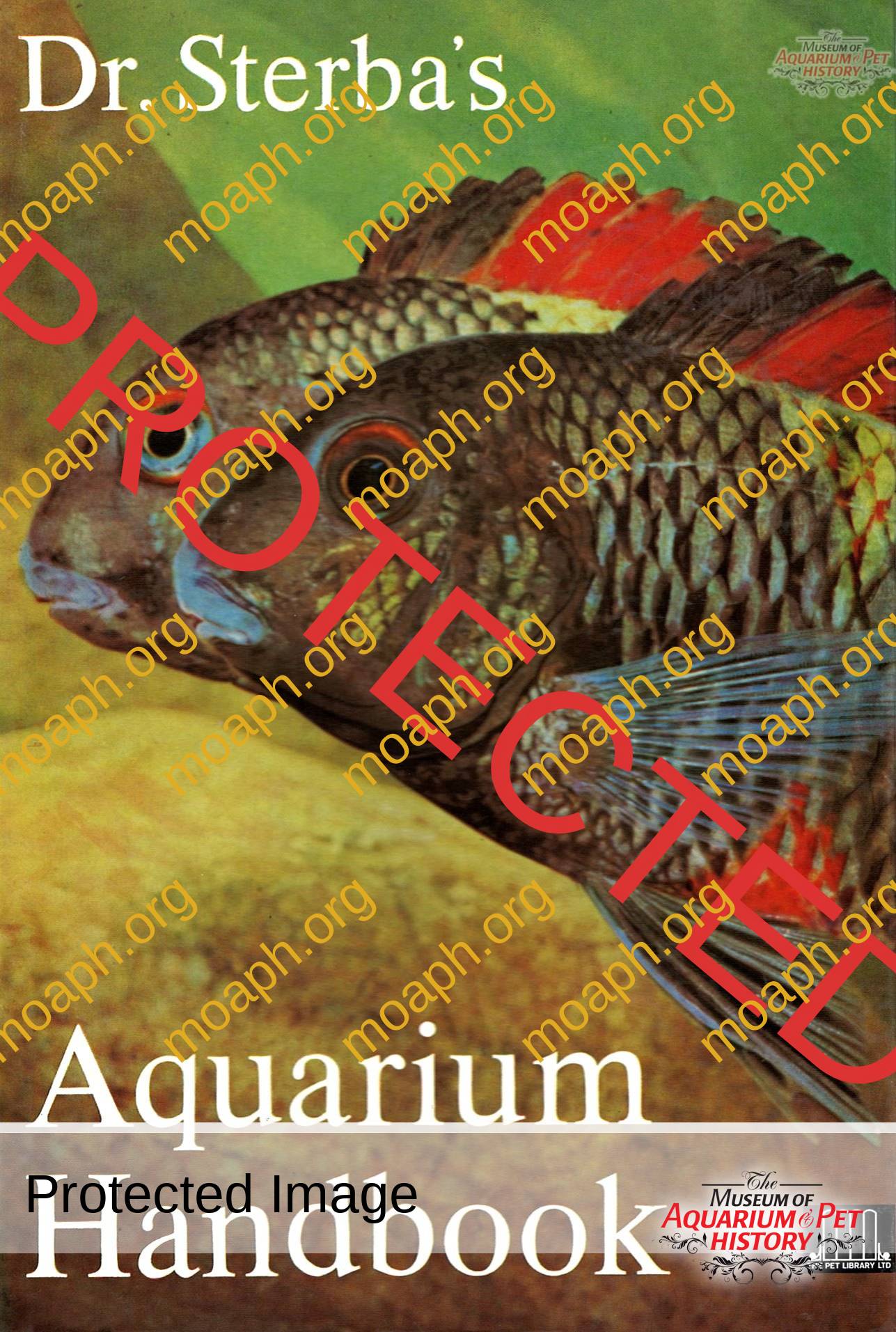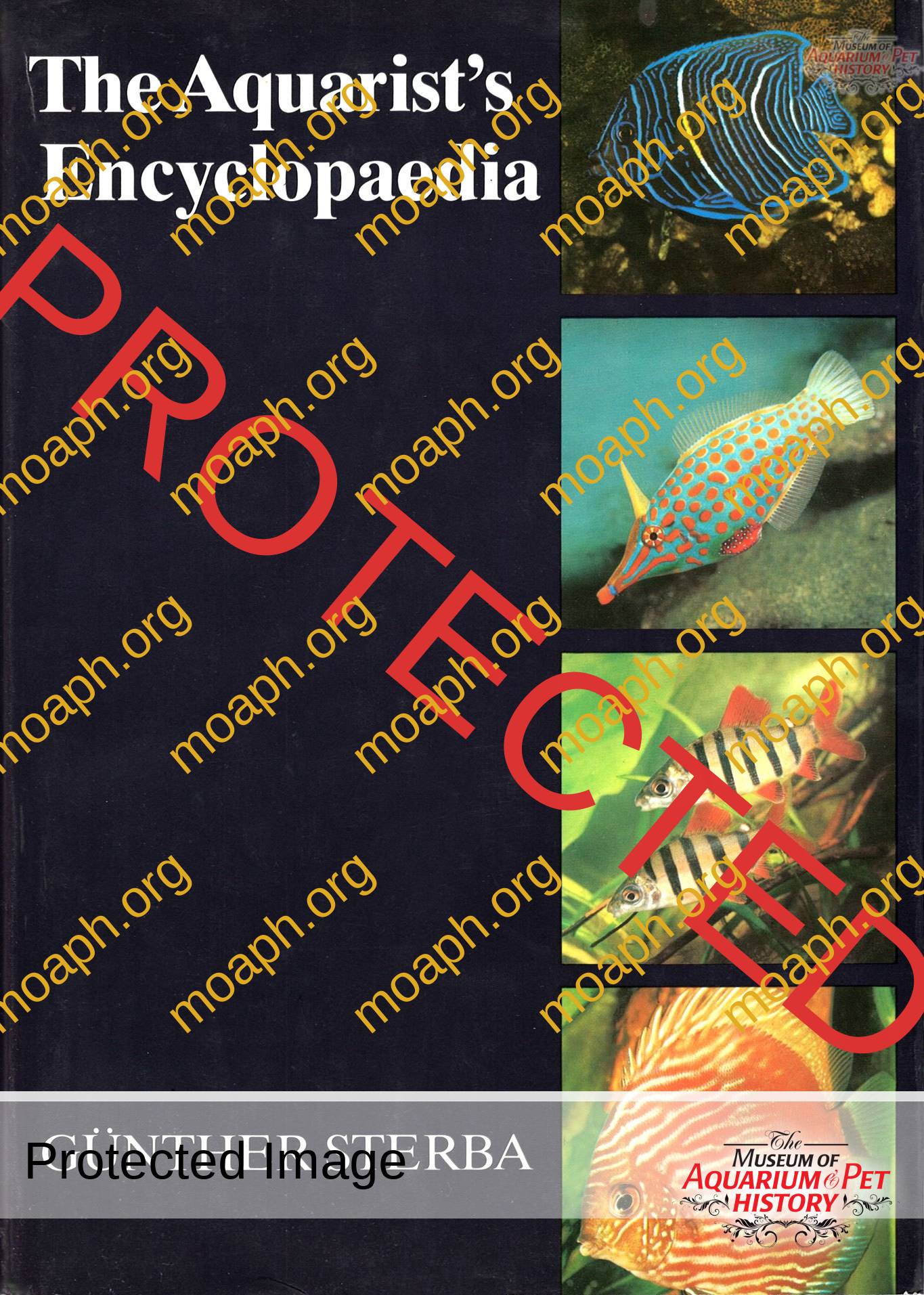Prof. Gunther Hans Wenzel Sterba (May 20, 1922, to June 16, 2021)
Saying goodbye to an aquarium legend.
Those of us that started keeping tropical fish as teenagers always had one favorite book that we “cut our teeth on,” so to speak. If you were a teen in the 1950s, it was probably William T. Innes’s Exotic Aquarium Fishes which went through 19 editions (An aquarium book record). But, if you were like me and grew up in the 1960s and 70s, you probably had a copy of Gunther Sterba’s Freshwater Fishes close by for reference material. My fondness for Sterba’s book partially came from the fact that we both loved “unusual” fish like knife fishes and Mormyrides (Elephant nose type fish), in fact, Sterba mentions he keeps a Gymnotus carapo (banded knifefish) as a pet, and hand fed it! I would like to thank Dr. Hans-Joachim Herrmann and Aquaristik Fishmagazin for allowing MOAPH to reprint the memorial of this wonderful human being and aquarium legend.
Everyone who knew him was deeply shocked by the news: Professor Gunther Hans Wenzel Sterba is dead. He died on June 16,2021, shortly after his 99th birthday. With Gunther Sterba, not only is a glamorous era of aquarium science finally coming to an end. Many of his students and friends lost in him an understanding teacher and critical companion who, like no other, has played a decisive role in the development of aquaristics over the past decades. For many readers, the literature he wrote was the entry point into the world of fish and, moreover, into the basics of biology as a whole. One can even say without exaggeration that the numerous books from his pen were in some cases Bible-like in character and still have them today. Many later very successful breeders of aquarium fish acquired their tools from the books of Gunther Sterba. Regardless of whether it was the first steps in the care and reproduction of aquarium fish, or whether you had to clarify a special ichthyological question, you could and still can get advice and help from Prof. Sterba’s books.
Gunther Sterba was born on May 20th, 1922 in Brux in Northern Bohemia (today Most, Czech Republic). His father was the Dipl.-Ing. Alfred Sterba and his mother Melitta Sterba, nee Baudis. From 1928 to 1933 Gunther Sterba attended the elementary schools in Brux, Oberleutendorf (today Horni Litvinov) and Brusau (today Brezova nad Svitavou), from 1933 to 1942 the grammar schools in Brux and Dux (today Duchcov), where he also graduated from high school. From 1935 to 1938 he also took part in training as a stonemason. An apprenticeship that he did not complete. From 1942 to 1943 he was drafted for the Reich Labor Service in the air control center in Liegnitz (now Legnica, Polish. Republic) before he had to do his military service from 1943 to 1945. During the war he was wounded three times, of which severely in September 1944. From 1944 to 1945 he received medical treatment in the hospitals of Thale, Rostock and Heide (Holstein). During the same period, he began a distance learning course for disabled people in human medicine in the Thale military hospital, which was organized by Charles University in Prague. From May to July 1945 he was in English captivity in the military hospital in Heide.
After his release, he completed his physics course at the Friedrich Schiller University in Jena in 1946, after studying human medicine there for two more semesters. He then completed another seven clinical semesters. At the same time, on the advice of Prof. Jurgen Wilhelm Harms, he started a second degree in zoology and botany at the Friedrich Schiller University in Jena. On April 14th in 1949 he received his doctorate with “summa cum laude”. Rer. Nat. at the zoological institute of this university. His topic was: “About the morphological and histogenetic thymus problems in Xenopus laevis Daudin and some remarks about the morphology of the tadpoles”. He held the position of scientific assistant at the same university from 1949 to 1952 before he was appointed university lecturer for general zoology on July 1, 1952.
On May 20th, 1952, he defended his qualification for the position with “The physiology and histogenesis of the thyroid gland and thymus in the brook lamprey (Lampetra planeri Bloch) as the basis of phylogenetic studies on the evolution of the internal secretory branchial derivatives”. He was appointed professor with a teaching position for zoology at the Friedrich Schiller University in Jena on July 1, 1958. Thereafter, from 1957 to 1961 appointment negations were held with the universities in Halle (Saale), Tharandt, Leipzig, Marburg and Heidelberg. In particular, Sterba would have gladly followed the appointment to Heidelberg, which was primarily supported by Franz Duspiva. However, on March 1st, 1959, he decided to accept the appointment at the Karl Marx University in Leipzig. He had been promised the establishment of a laboratory for electron microscopy and one for biochemistry at this university. There he researched and taught in a wide variety of functions until his retirement on September 1, 1987. From 1959 to 1961 he was director of the Zoological Institute at the Faculty of Mathematics and Natural Sciences at the Karl Marx University in Leipzig and from 1961 to 1968 Vice Dean for Research.
As a university lecturer, Sterba was in a class of his own. His lectures were thrilling, interestingly designed, well prepared and very instructive. As an examiner, Sterba was feared, demanding, but fair. Some aquarists and terrarium keepers, who later became very well-known, even had to repeat one or the other test with him. A very prominent herpetologist still remembered Sterba’s saying decades after he passed his main zoology exam: “As you explain it, you can read it in the illustrated newspapers.” His students include the well-known armored catfish specialist Dr. Joachim Knaack. Sterba was very economical with praise and recognition. His critical remarks such as “Mr. Zarske, I have read your work twice (that alone was an accolade A.Z.), you are probably right” were the highest of feelings, which he said appreciatively. However, he commented on too bad lectures by overzealous speakers with the words: “You may have bought my books, but you learned nothing from them”. If someone came to him with an incomplete hypothesis, he was mercilessly sent back sobering, with the stipulation that this or that investigation that had not yet been carried out was submitted.
In its research activities, Sterba was very successful and versatile. Together with his staff and students, he published over 200 publications, which can be assigned to around three major subject areas. In addition to the genesis and structure of the incretory organs of the lower vertebrates, these concerned the comparative neuroendocrinology of the vertebrates, as well as the circumventricular organs and the liquor of the vertebrates. In these areas he achieved spectacular results, which were presented, among other things, in an international symposium that he organized several times in Reinhardsbrunn Castle. Its first publication in 1948 was a “teaching chart for the cerebrospinal and autonomic innervation of humans” in the Gustav Fischer publishing house, Jena.
Due to his successful research work, Sterba was a member of many scientific associations, in which he also held high administrative offices. For example, he was President of the Biological Society of the GDR from 1963 to 1976. He was elected to this office three times by secret ballot and renounced another candidacy after a secret ballot was no longer guaranteed. Since 1966 he was a full member of the elected adjunct for Saxony in two terms a Senate member. From 1967 to 1991 Sterba was a full member of the German Academy of Sciences in Berlin and, since 1982, was the first member from the former GDR to be a foreign member of the Royal Swedish Academy of Sciences. In 1971 he received an honorary doctorate to become Dr. h.c. from the University of Utrecht/Holland and in 1973 he was awarded the title of Dr. sc. Nat. by the Scientific Council of the Karl Marx University in Leipzig. In 1982 he received an invitation from the then Japanese Crown Prince and later Tenno Akihito to a private audience (solo) in the Imperial Palace. In 1988 Sterba was made an honorary senator of the University of Leipzig. These are just a few of the functions and honors that STERBA held or that were bestowed upon him.
In 1946 Sterba joined the SPD in Weimar. After the compulsory merger of the SPD with the KPD to form the SED, he resigned from the party in 1953. Since then he has been non-party.
Generally understandable overview representations of the lamprey (Petromyzonidae, 1952, 1962, 1967) and the Central European loach-like (Cobitidae, 1962) testify to the wide range of biological interests of Sterba. In addition to his professional research and teaching activities, Sterba was interested and active in many different ways. He was interested in orchids, antiques, paintings, porcelain and mollusks (olives). He had an extensive porcelain collection, parts of which he donated to the Grassi Museum in Leipzig. These were 36 plates from a service once owned by the French Empress Josephine, which Napoleon had given his wife as a present. When Napoleon marched into Berlin with his troops after the battle of Jena and Auerstedt in 1806, he instructed the Konigliche Porzellanmanufaktur Berlin (KPM) to produce a dessert service with botanical questions. Tropical and subtropical species, which at the time reached Europe as a result of the developing trade, served as templates.
In recent years, Sterba has also dealt with the natural scientist Wilhelm Gottlieb Tilesius von Tilenau, who was born in Muhlhausen and who took part in the first Russian circumnavigation of the world from 1803 to 1806 under Captain Adam Johann von Krusenstern as a scientist and draftsman.
The best known, however, were his specialist aquarium books, with which he actually became much better known than with his actual research. In 1954, the first volume of his aquarium science appeared, in which he presented general questions about fish care such as aquarium technology, biology, ecology and anatomy of the fish, as well as the most important species. Hanns-Joachim Franke and Hermann Mainken supported him in writing this book. The second volume was published in 1956 and dealt with fish diseases, aquatic and marsh plants, and the basics of marine aquariums. In the first edition of the second volume, the botanical part was edited by Albert Wendt and, after his death, in the subsequent editions by Helmut Muhlberg. In an appendix of the second volume in the first edition there is also an extensive bibliography on all sub-areas of aquaristics being outsourced due to the meanwhile greatly increased experience in this area and the special literature that existed with it. In total, Sterba’s aquarium science was disseminated in 13 editions. 600,000 copies of this book were sold.
However, Sterba’s main work in the field of aquarium science appeared for the first time in 1959 under the title “Freshwater fish from all over the world” from the fourth edition in 1966 it was renamed “Freshwater fish of the world”. Axel Zarske, Klaus Breitfeld and Helmut Sander were co-authors of this edition. This book shows all freshwater fish that had been kept and reproduced in aquariums in Central Europe up to this point. There were license requirements for “freshwater fish” in the Federal Republic of Germany, the USA, Great Britain, Canada, the Netherlands and the Czech Republic. The book provided an overview of the fish families found in freshwater around the world. For this reason, it was also included in the lists of recommended books for students in relevant fields of study in the United States. The “freshwater fish” are therefore to be regarded as a contemporary continuation of such overview works as Arnold & Ahl (1936) “Fremdlandische Subwasserfische” or Holly, Meinken & Rachow (1934 to 1967) “The aquarium fish in words and pictures”, which claim had to depict the entire spectrum of fish species kept in aquariums at the time.
After the many new discoveries and taxonomic upheavals, such an overview would now be more than necessary. Unfortunately, this will no longer be feasible because no publisher is willing to finance such an extensive work and so many photos in advance. In addition, no one today is in a position to survey the ichthyology of freshwater in its entirety down to the last detail and to master all aquarium problems and experiences. After the political change, this book was reprinted several times by other publishers, so it is not clear how many reprints actually appeared. However, there were probably more than 13 or even 15 editions that were sold well below the original price, whereby the authors were neither informed nor rewarded.
In 1971 a weakened version of the “freshwater fish” appeared under the title “aquarium fish” in which only the most frequently cared for species were described. In 1978 Sterba also published the “Lexicon of aquatistics and Ichthyology”, on which Gert Bruckner, Hanns-Joachim Franke, Udo Jakob, Joachim Kormann, Helmut Muhlbert and Wilfried Naumann contributed as authors. There are several editions and licensed editions of these books as well as translations into other languages, so that a total of more than 1.5 million copies have been sold.
How was it possible that one person had so much knowledge and was able to publish so successfully? This can only be explained by the fact that someone was familiar with the subject from an early age, remained connected to this subject his entire life and thus “grew” with the increase in knowledge, so to speak. Sterba was already keeping and breeding aquarium fish at the age of twelve. Later, of course, he could no longer care for and multiply all imported species. As a very busy scientist and university professor, he simply didn’t have the time for that. However, he had enough practical experience as well as the talent and the gift to recognize the upcoming problems and to present them to his readers in a professional and easily understandable way. For this reason, his books are not only characterized by a high level of professional competence, but also by their artistic perfection.
Although special zoology and thus ichthyology were not part of his core professional tasks, one can hardly speak of a Sterba hobby in this context. The meticulousness and professionalism with which he devoted himself to this subject overshadowed many professionals who were professionally involved in this field. Anyone who was lucky enough to work on one of these works has got to know it from their own experience. His opinions and basic conception not only influenced East Germany. His books, which are distributed around the world, were an excellent platform for this. His constant critical observation of his own and other people’s results, which he inevitably had to adopt in his books, led to a scientifically founded and well-founded aquarium science, especially in eastern Germany. Only on such. A basis can such a level be achieved that aquarium science had achieved despite the unfavorable conditions in the former GDR.
To get an overview of the many world first breeds that the many dedicated aquarium enthusiasts in eastern Germany have, one only needs to take a look at the old volumes of the magazine “Aquarien Terrariums”, on whose editorial board Sterba has been a member for years. He is representative of a time in which aquarium science and ichthyology were still a unit, in which aquarium science was still scientifically and ichthyology considered the fish holistically. By means of precise ethological studies, aquarists tried, for example, to identify relationships in courtship and the spawning behavior of their fosterlings; Ichthyologists have used these observations and tried to reconcile them with their findings. Without observing the diverse behaviors of living fish in the aquarium, research into many unique life processes would never have been possible, or only incompletely.
The admiration shown to Prof. Sterba by his friends and students is expressed, among other things, in the fact that three newly discovered fish species were named after him. These are one of the most beautiful armored catfish, Corydo – ras sterbai Knaack, 1961, a ground tetra, Geryichthys sterbai Zarske, 1997 and Serrapinnus sterbai Zarske, 2012, a representative of the subfamily of the Cheirodontinae from the family of the real tetras (Characidae).
The gap torn by the death of Prof. Sterba will probably not be closed again. His friends and students will always keep him in their minds.
